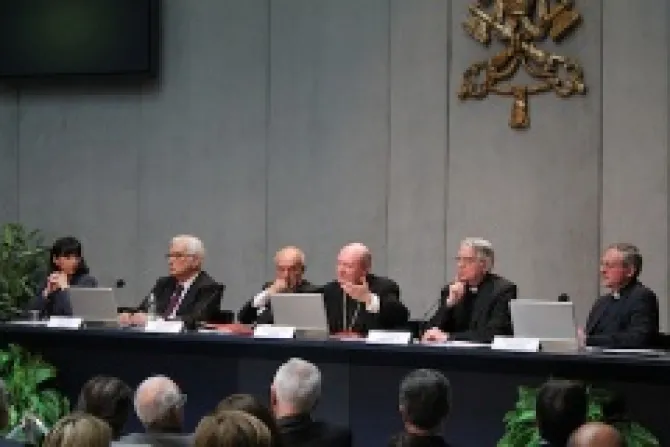Vatican City, May 14, 2013 / 08:33 am
The Vatican is participating for the first time in a famous international art exposition in Venice under the theme "Creation, Un-Creation and Re-Creation," with the aim of promoting modern dialogue on faith.
The 55th edition of Venice's Biannual Art Festival, known as the "Biennale di Venezia" in Italian, will take place June 1 to Nov. 24 and will bring together exhibits from 88 different countries.
The Vatican's contribution will use the Book of Genesis as its narrative thread.
It is "a project that is not only extraordinarily innovative, but also responds to its own objectives, that is instituting and promoting occasions of dialogue within an ever broader and diversified context," said Cardinal Gianfranco Ravasi, president of the Pontifical Council for Culture.
"The Pontifical Council for Culture holds contemporary art at the heart of its interests, for it is one of the most important cultural expressions of recent decades," he added during a May 14 press conference at the Vatican.
The exhibit is being curated Vatican Museums director Antonio Paolucci, who described to the press how each of the themes in linked together.
"None of the three artistic works can be fully appreciated without recourse to the overall meaning of the three moments as presented in the Genesis," he said.
"Each and every one of these moments is able to contain and comprehend the other two," he added.
According to the director, the theme of creation "triggers a dialogue, awash with echoes and reverberations, between the vegetable and animal kingdom and the human dimension."
"It leads, via memory to other personal narrations on the concept of origins within an interactive plane that is also a temporal intersection," said Paolucci.
Studio Azurro has been entrusted with the theme of "creation" as well as the last theme, "re-creation."
Josef Koudelka's photographs have been chosen to represent "de-creation."
Paolucci noted that the photographs show "the destruction brought about by war, the material and conceptual consumption of history through time and the two opposing poles of nature and industry are made to emerge."
"The photographer's images expose an abandoned, wounded world and at the same time are able to transform fragments of reality into works of art bordering on abstraction," he commented.
The third theme, "re-creation", was entrusted to the artist Lawrence Carroll, who Paolucci said is capable of giving life to "salvaged materials."
The display will cost the private Foundation for the Heritage and Artistic Activities of the Church a total of 750,000 Euros ($970,000), and the costs will be covered entirely by donations.
Miss Micol Forti, who works for the Pontifical Council for Culture, explained the method the Vatican used to select which artists would develop the three sections.
"The theme was the real guide that has conducted our work of reflecting, discussing and then selecting and choosing," said Forti.
"It was a work that was shared by a scientific committee that reflected thoroughly, based on the … theme's vitality," she added.
At the end of his remarks, Cardinal Ravasi alluded to how the Church has been increasing its support for artistic endeavors.
"Clearly, each of these aspects was only a starting point for the selected artists.
"A vital, rich, and elaborate dialogue has been established with them and is a sign of a renewed, modern patronage. To them, my most heartfelt thanks."


